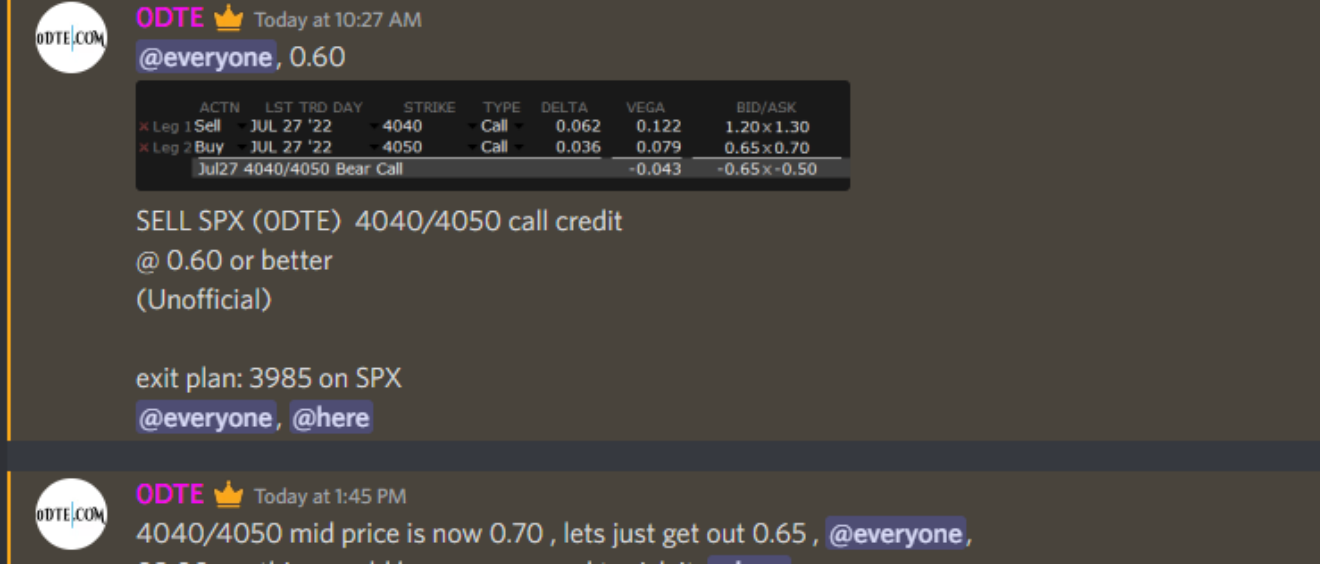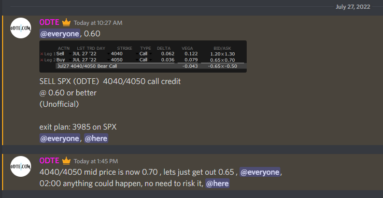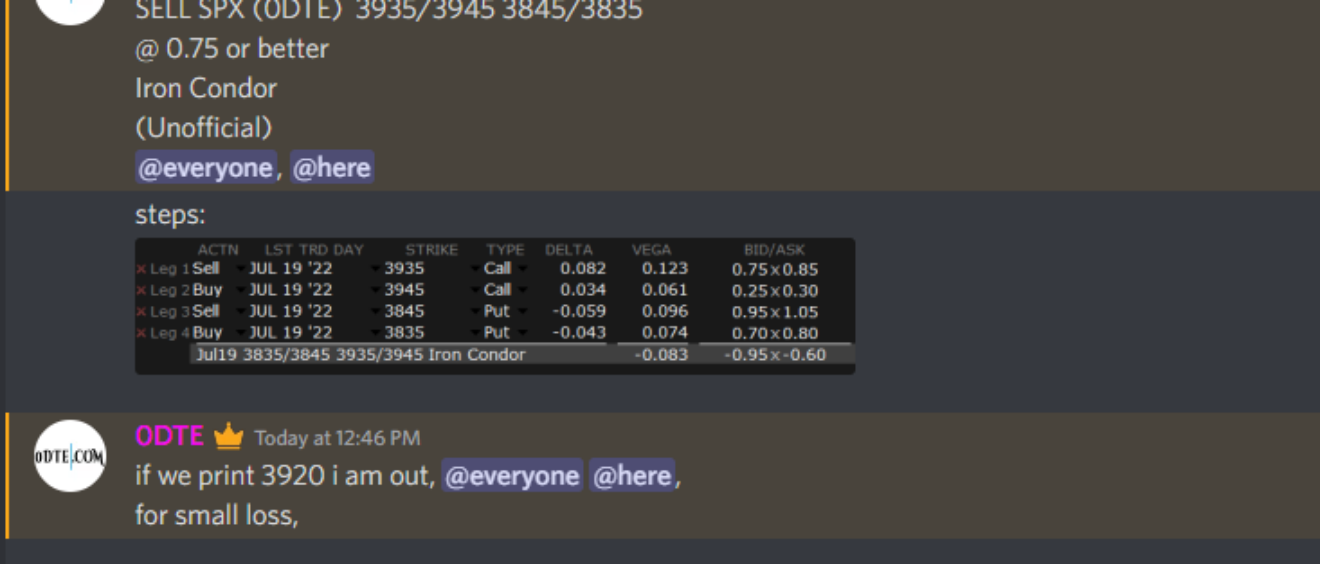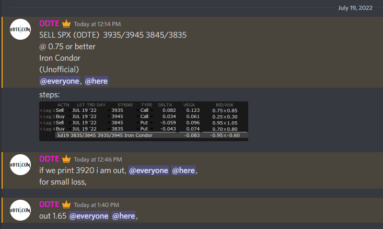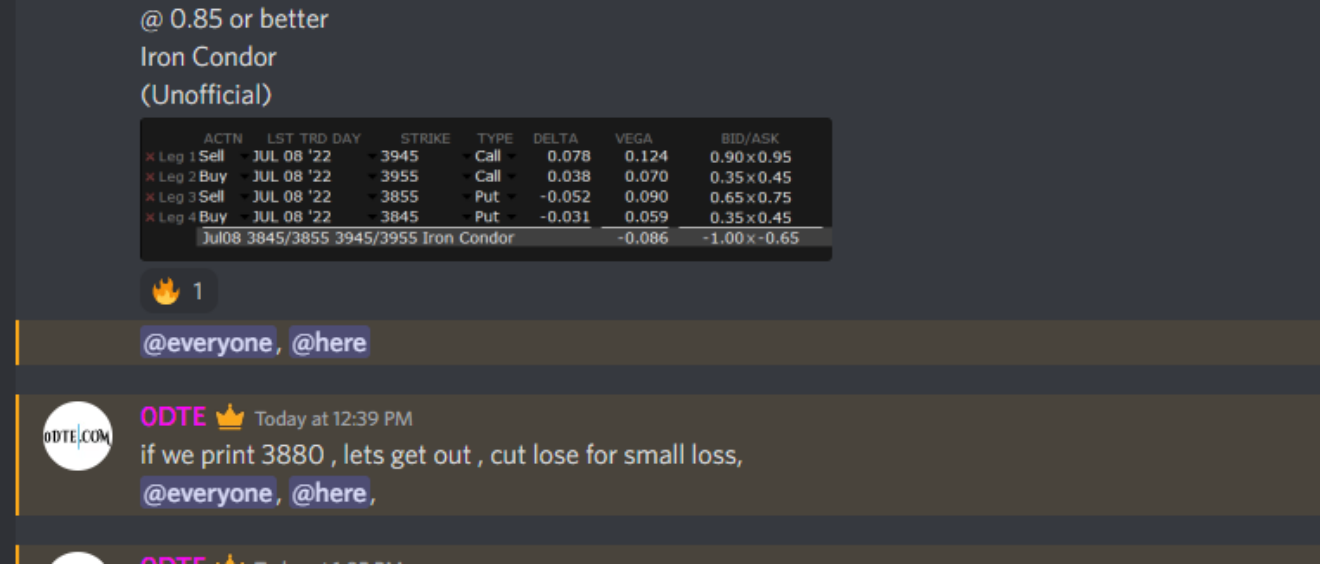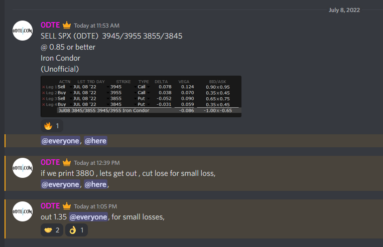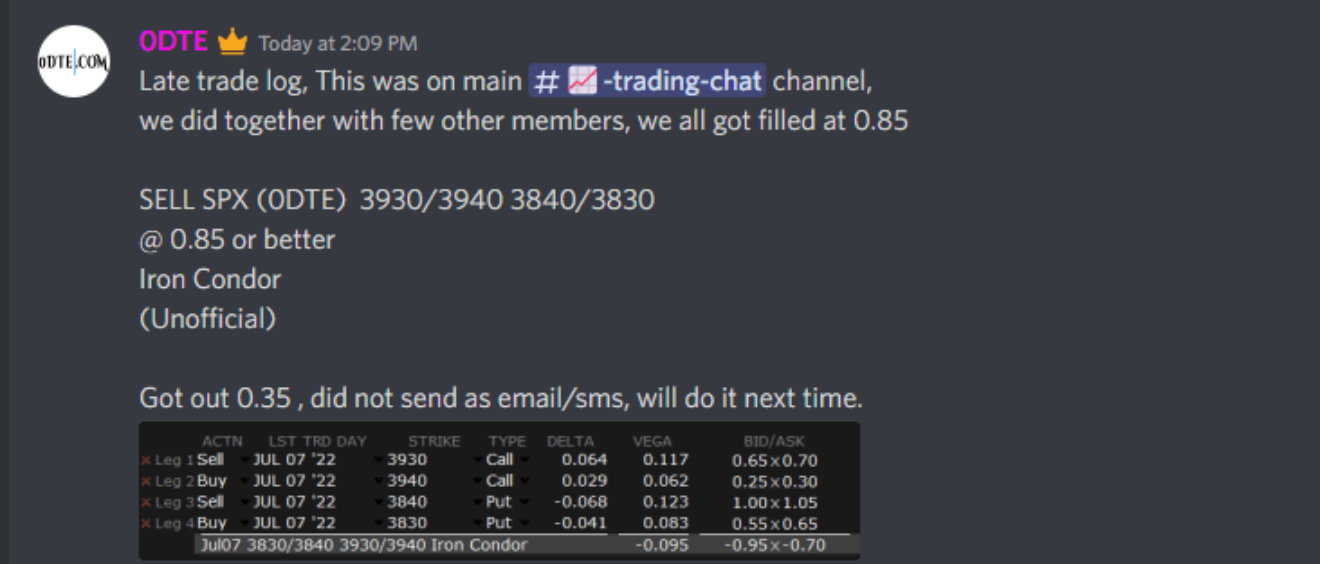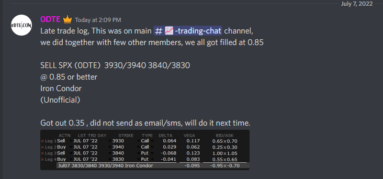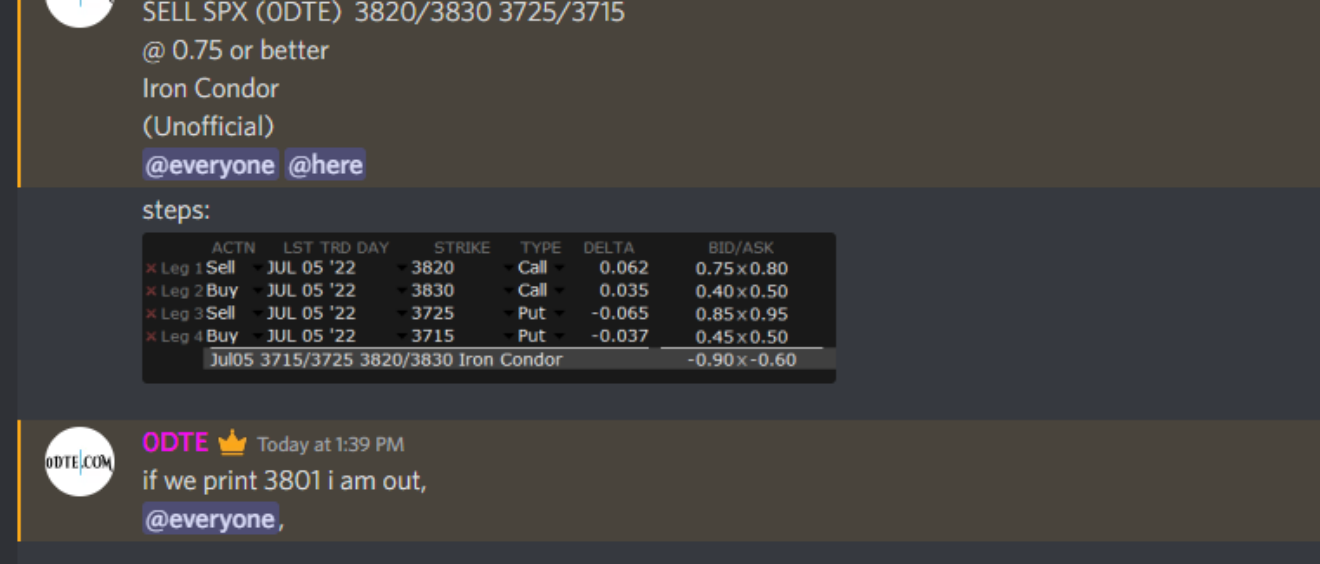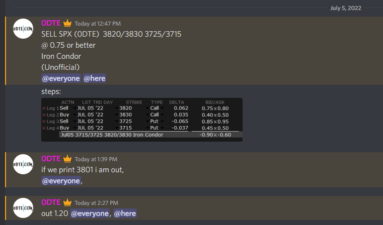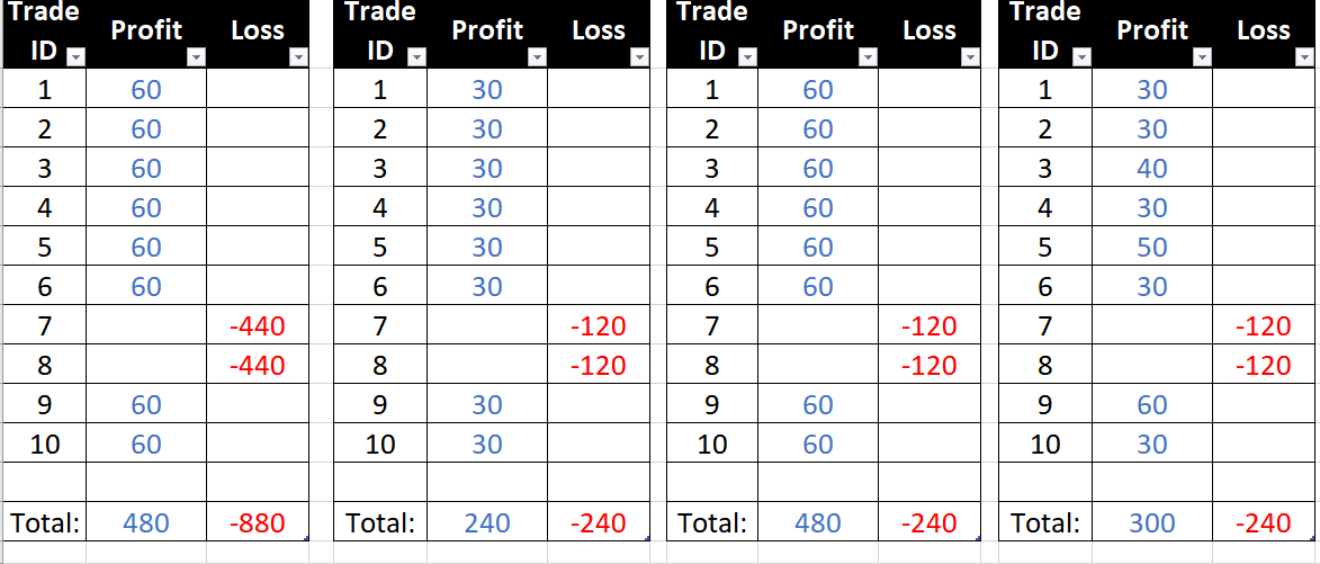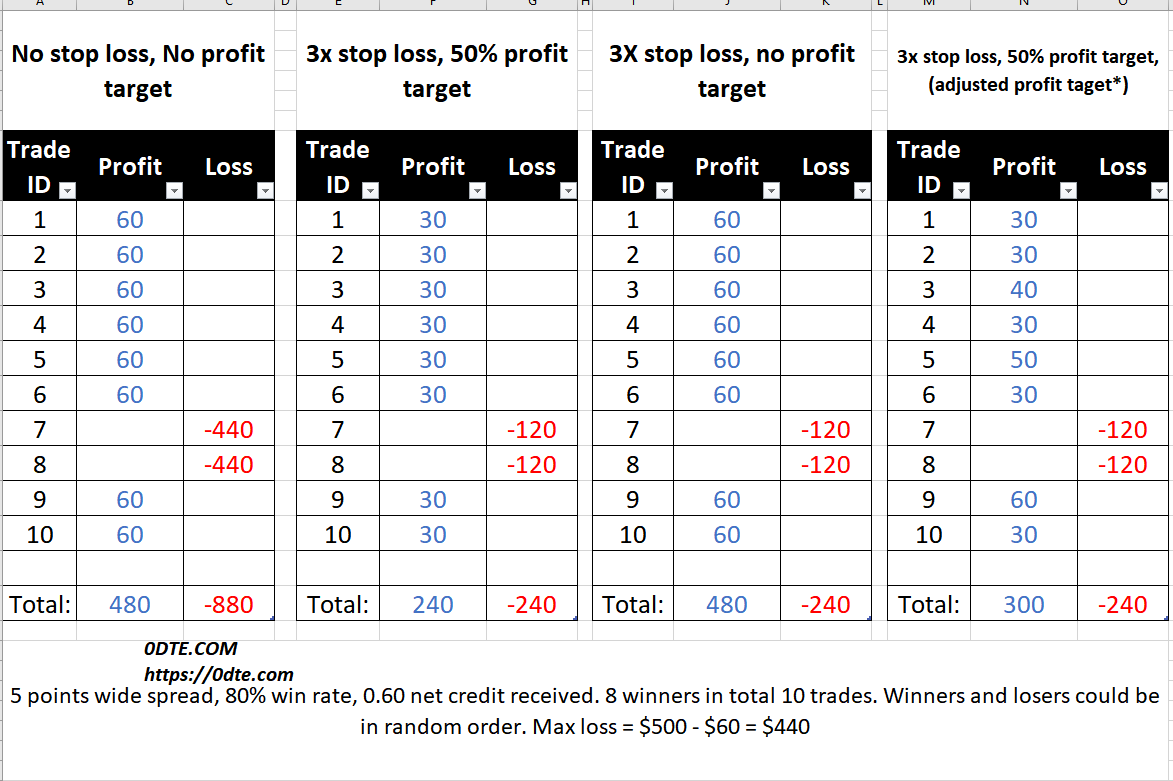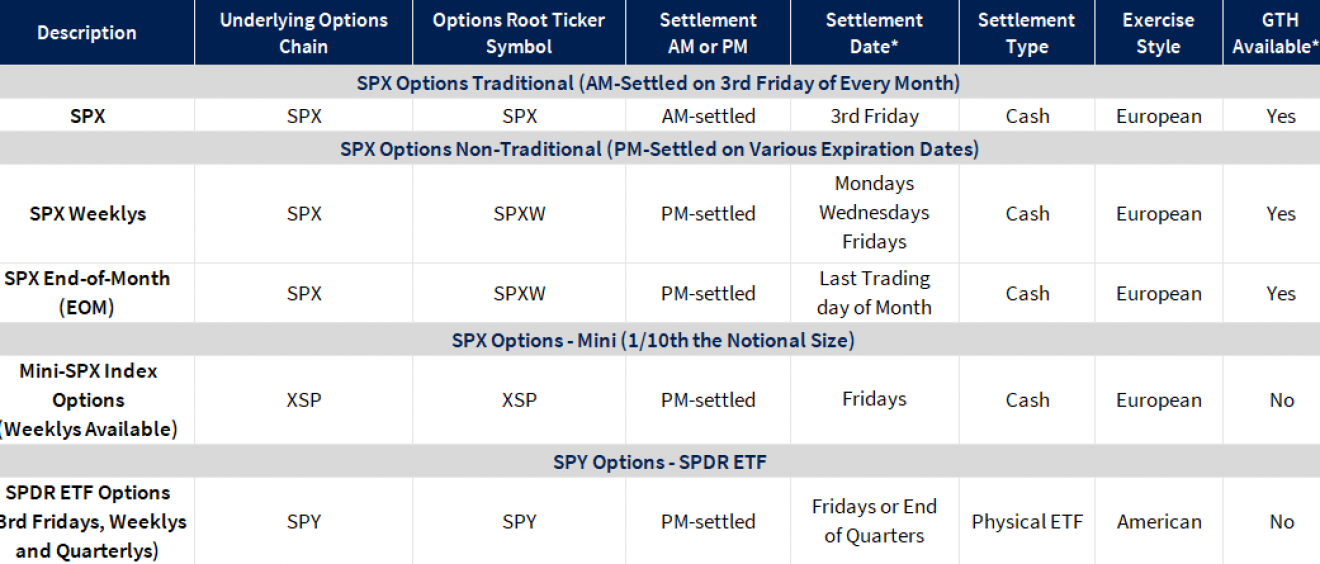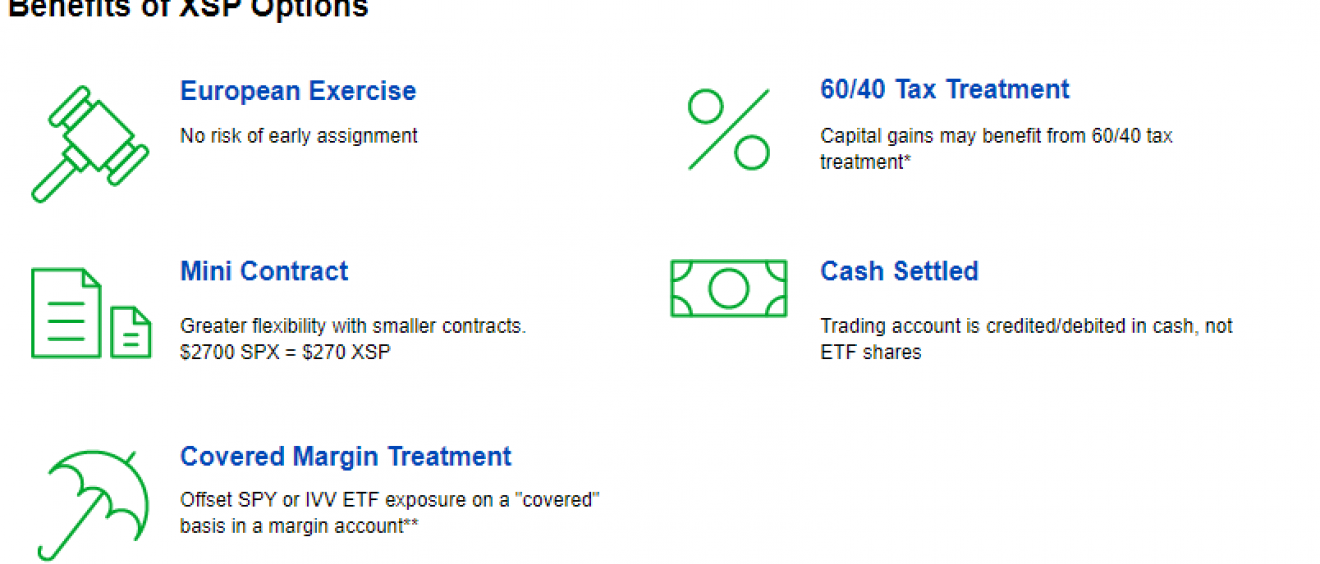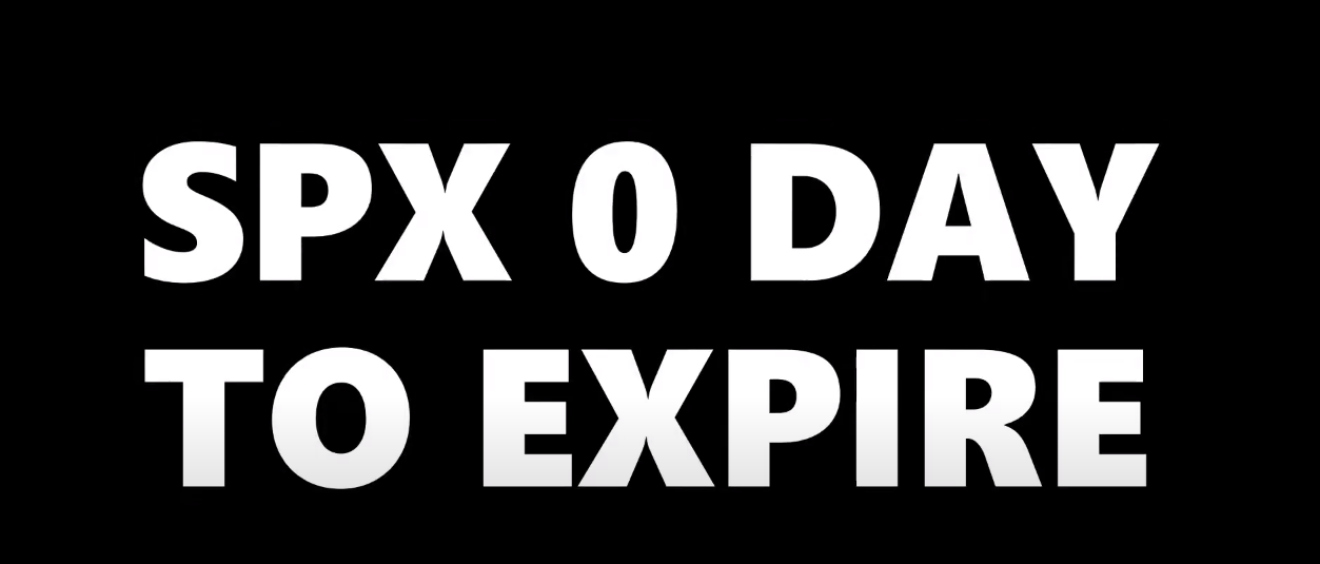Cboe’s SPX® options products provide investors with the tools to gain efficient exposure to the U.S. equity market and execute risk management, hedging, asset allocation, and income generation strategies.
Symbol:
SPX
Underlying:
The Standard & Poor’s 500 Index is a capitalization-weighted index of 500 stocks from a broad range of industries. The component stocks are weighted according to the total market value of their outstanding shares. The impact of a component’s price change is proportional to the issue’s total market value, which is the share price times the number of shares outstanding. These are summed for all 500 stocks and divided by a predetermined base value. The base value for the S&P 500 Index is adjusted to reflect changes in capitalization resulting from mergers, acquisitions, stock rights, substitutions, etc.
Multiplier:
$100.
Premium Quote:
Stated in decimals. One point equals $100. Minimum tick for options trading below 3.00 is 0.05 ($5.00) and for all other series, 0.10 ($10.00).
Strike Prices:
In-,at- and out-of-the-money strike prices are initially listed. New series are generally added when the underlying trades through the highest or lowest strike price available.
Strike Price Intervals:
Five points. 25-point intervals for far months.
Expiration Months:
Up to twelve (12) near-term months. In addition, the Exchange may list up to ten (10) SPX LEAPS® expiration months that expire from 12 to 60 months from the date of issuance.
Expiration Date:
The third Friday of the expiration month.
Exercise Style:
European – SPX options generally may be exercised only on the expiration date.
Last Trading Day:
Trading in SPX options will ordinarily cease on the business day (usually a Thursday) preceding the day on which the exercise-settlement value is calculated.
Settlement Value:
Exercise will result in delivery of cash on the business day following expiration. The exercise-settlement value, SET, is calculated using the opening sales price in the primary market of each component security on the expiration date. The exercise-settlement amount is equal to the difference between the exercise-settlement value and the exercise price of the option, multiplied by $100.
Position and Exercise Limits:
No position and exercise limits are in effect.
Margin:
Purchases of puts or calls with 9 months or less until expiration must be paid for in full. Writers of uncovered puts or calls must deposit / maintain 100% of the option proceeds* plus 15% of the aggregate contract value (current index level x $100) minus the amount by which the option is out-of-the-money, if any, subject to a minimum for calls of option proceeds* plus 10% of the aggregate contract value and a minimum for puts of option proceeds* plus 10% of the aggregate exercise price amount. (*For calculating maintenance margin, use option current market value instead of option proceeds.) Additional margin may be required pursuant to Exchange Rule 12.10.
Cusip Number:
648815
Trading Hours:
Extended Hours: 2:00 a.m. to 8:15 a.m. Central time (Chicago time).
Regular Hours: 8:30 a.m. to 3:15 p.m. Central time (Chicago time).
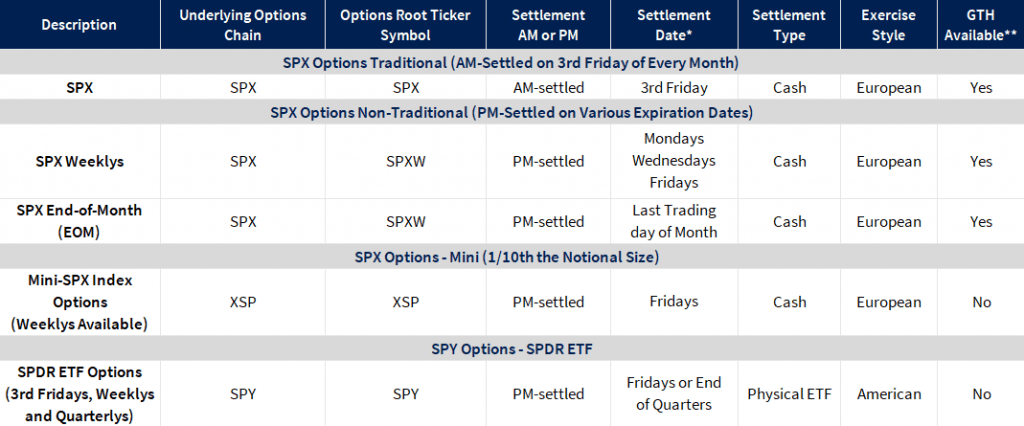
The Cboe Mini-SPX option contract, known by its symbol XSP, is an index option product designed to track the underlying S&P 500 Index. At 1/10 the size of the standard SPX options contract, XSP provides greater flexibility for new index options traders or traders managing an individual portfolio.
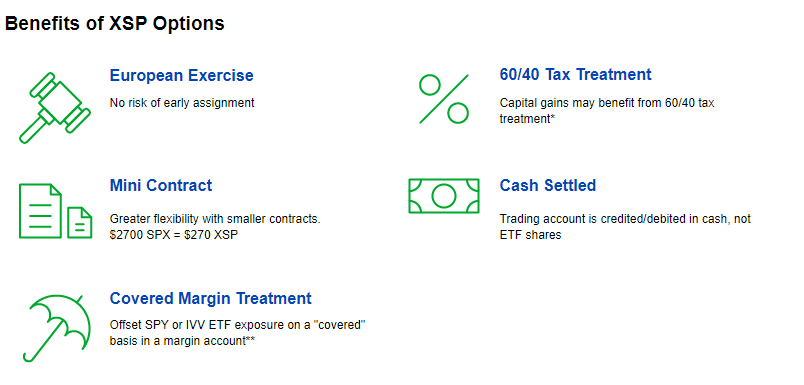
XSP Weekly Options
Whether it’s trading around specific events, such as earnings announcements or economic data reports, or executing overwriting or spread-trading strategies, Cboe XSP weekly options allow traders the granularity to more closely tailor their trades to meet their needs. And for traders executing premium collection strategies, XSP weekly options provide the opportunity to collect premium 52 times per year rather than 12.
XSP weekly options are offered with Monday, Wednesday, and Friday settlements. For Friday settlements, options contract expirations occur on non-standard Friday expirations throughout the year. Similarly, Monday and Wednesday XSP Weeklys options settlements may expire on any Monday or Wednesday of the month, other than a Monday or Wednesday that coincides with an end-of-month expiration date.
XSP Monday, Wednesday and Friday Weeklys options are typically listed on Friday, Tuesday and Thursday, respectively and will expire on their expiration date. If a standard or EOM options contract settlement exists in a week that coincides with a typical Weekly expiration date, a Weekly expiration will not exist on that expiration day. (The term Weeklys refers to the fact that the contracts are listed every week, not that they are a seven-day contract). Settlement processes for XSP weeklys are the same as their standard options counterparts (index, ETF, etc.).
Trading XSP
XSP options trade on Cboe’s Hybrid Trading System, which provides investors with the combined advantages of electronic trading and an open-outcry market on a single platform. XSP options also trade on the EDGX exchange.
XSP Options Product Specifications
Symbol: XSP
Underlying:
The Mini-SPX Index, based on 1/10th the value of the Standard & Poor’s 500 Index (SPX). The Standard & Poor’s 500 Index is a capitalization-weighted index of 500 stocks from a broad range of industries. The component stocks are weighted according to the total market value of their outstanding “free float” shares.
Multiplier:
$100.
Strike Price Intervals:
Generally, $1 or greater where the strike price is $200 or less and $5.00 or greater where the strike price is greater than $200. For XSP weekly contracts, the lowest strike price interval Cboe may list is $0.50.
Strike (Exercise) Prices:
In-, at- and out-of-the-money strike prices are initially listed. New strikes can be added as the index moves up or down.
Premium Quotation:
Stated in decimals. One point equals $100. The minimum tick for XSP options is 0.01 ($1.00) for all series, including LEAPS.
Exercise Style:
European – Mini-SPX Index options generally may be exercised only on the expiration date.
Last Trading Days:
The last trading day for Standard, Weekly and End-of-Month (EOM) XSP options is their expiration date. On their last trading day, trading in expiring XSP options closes at 4:00 p.m. ET.
Expiration Dates for Standard, Weekly and EOM Options:
Standard XSP options expire on the third Friday of the expiration month or the immediately preceding business day if the Exchange is not open on that Friday. XSP Weekly options expire on a Monday, Wednesday, or a Friday. If the Exchange is not open on a Wednesday or Friday, the normally expiring Wednesday or Friday Weekly will expire on the immediately preceding business day. If the Exchange is not open on a Monday, the normally expiring Monday XSP Weekly will expire on the first business day immediately following that Monday. EOM XSP options expire on the last business day of the expiration month.
Expiration Months:
Cboe may list up to six expiration months of XSP options at one time. Weekly options (End-of-Week, Wednesday Weekly), EOM options and LEAPS may also be listed.
Settlement of Option Exercise:
Exercise will result in delivery of cash on the business day following expiration. The exercise settlement value, XSP, is one-tenth (1/10th) the official closing price of the S&P 500 Index as reported by Standard & Poor’s on the last trading day of the expiring series. The exercise settlement amount is equal to the difference between the exercise-settlement value and the exercise price of the option, multiplied by $100.
Position Limit:
No position and exercise limits are in effect.
Margin:
Purchases of puts or calls with 9 months or less until expiration must be paid for in full. Writers of uncovered puts or calls must deposit / maintain 100% of the option proceeds* plus 15% of the aggregate contract value (current index level x $100) minus the amount by which the option is out-of-the-money, if any, subject to a minimum for calls of option proceeds* plus 10% of the aggregate contract value and a minimum for puts of option proceeds* plus 10% of the aggregate exercise price amount. (*For calculating maintenance margin, use option current market value instead of option proceeds.) Additional margin may be required pursuant to Exchange Rules 12.3(h) and 12.10.
CUSIP Number:
12505Q
XSP Trading Hours:
9:30 a.m. – 4:15 p.m. Eastern Time. On the last trading day, trading hours for expiring XSP standard, weekly and EOM options are 15 minutes shorter from 9:30 a.m. – 4:00 p.m. Eastern Time.
What is SPX 0DTE strategy?
SPX weekly options that expire on every Monday, Wednesday and Friday we trade them on the day it expires. So, there is no overnight risk. Usually we open a credit spread when the market open around 9:30 A.M EST, and we close the trade before market close same day around 4:00 P.M EST. That is why it is called 0DTE, AKA same day option trade.
Why 0DTE strategy?
1. Can Profit if SPX increase, decrease, or doesn’t move at all. (High probability of making money)
2. Limited loss potential. Never worry about “blowing up” when the market makes a huge move (assuming appropriate position size)
3. Very simple strategy. The two primary credit spread strategies only have two components.
4. Consistent daily/weekly income. (why i started trading this strategy personally 🙂 )
What is SPX?
SPX, or the Standard & Poor’s 500 Index, is a stock index based on the 500 largest companies with shares listed for trading on the NYSE or NASDAQ. The term “largest” refers to each firm’s market capitalization or its stock price multiplied by the number of shares it has outstanding.
The SPX itself may not trade, but both futures contracts and options certainly do.
Why SPX?
1. SPX Options expire on every Monday, Wednesday and Friday.
2. SPX pays no Dividend.
3. SPX Cash Settled when the market closes at 4:00 P.M EST.
No risk of early assignment and loss of dividends, no portfolio disruption on assignment.
What is a Credit Spread?
A credit spread where we sell an option at one strike and simultaneously buy an option at another. The way we use this in the SPX Spread Trader is to use a 5 pt spread between the 2 strike prices. So if we are selling a 3100 call we are purchasing a 3105 call at the same time. By entering these two trades as a single credit spread order, there is only a single commission cost. The difference in prices between these two options provides a net credit to your account. The beauty of this approach, is that there is no price movement in the SPX required to be profitable. SPX can go flat or have little movement at all, and our trade will still be profitable. All we need is for the SPX to close below 3100 (in this example), and both options will expire worthless and we retain the credit.
SELL TO OPEN -1 SPX NOV 15 2019 3100 CALL
BUY TO OPEN +1 SPX NOV 15 2019 3105 CALL
Net credit of $0.60. max loss:$4.40
in this example, we are investing $500 to open a bear call spread, receiving $60, and risking $440. as long as SPX stays below 3100 at 4:00p.m. EST, we will keep $60.
Most of the time, we don’t wait till market close. We close the trade at 50-60% profit target, and 2-2.5X credit stop loss.
in this example, we would close it for $0.20. So, we would make 0.60-0.20=$0.40 profit. OR, we would stopped out at $1.50 which is at 1.50-0.60=$90 loss.
6%
Avg Returns / Trade
* $30 (profit) / $500 (investment)
50%
Profit Target
* 0.60 (credit received) x 0.5 = 0.30 (profit)
2x – 2.5x
STOP LOSS
* 0.60 credit received x 2.5 = 1.5 (stop loss) – 0.60 (credit received) = 0.90 (net loss 🙁 )

